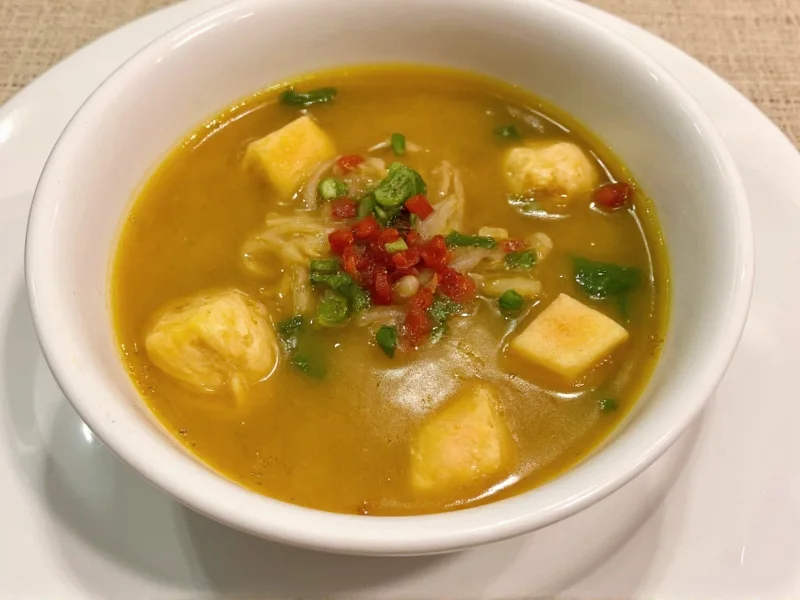Soup to go preparation involves properly packaging hot soup in leak-proof containers with secure lids, maintaining safe temperatures during transport (135°F/57°C or higher), and providing clear reheating instructions to customers. The complete process includes selecting appropriate containers, filling techniques to prevent spills, temperature management, and transportation methods that preserve quality.
The Essential Guide to Perfect Soup-to-Go Packaging
Creating soup that travels well requires specific techniques that go beyond standard soup preparation. Whether you're a restaurant owner, food truck operator, or meal prep enthusiast, understanding the proper methods for soup-to-go service ensures your customers receive hot, fresh, and spill-free meals every time. This guide covers the complete process from container selection to final delivery.
Choosing the Right Containers for Soup-to-Go
The foundation of successful soup-to-go service begins with appropriate containers. Not all takeout containers perform equally when holding hot liquids. Consider these factors when selecting containers:
| Container Type | Best For | Temperature Retention | Cost Considerations |
|---|---|---|---|
| Rigid plastic with locking lids | Most soups, especially chunky varieties | Moderate (60-90 minutes) | $$ |
| Double-walled paper containers | Clear broths, consommé | Good (90-120 minutes) | $$$ |
| Insulated thermal containers | Premium service, longer deliveries | Excellent (3+ hours) | $$$$ |
| Aluminum containers with plastic lids | Budget-friendly options | Poor (30-60 minutes) | $ |
Proper Filling Techniques to Prevent Spills
How you fill containers significantly impacts whether soup arrives intact. Follow these professional filling methods for leak-proof soup-to-go:
- Leave adequate headspace - Fill containers only 3/4 full to allow room for expansion during transport
- Wipe container rims - Use a clean cloth to remove any liquid from the sealing surface before applying lids
- Double-seal containers - For paper containers, apply plastic film over the top before securing the lid
- Use barrier materials - Place parchment paper between soup and lid for creamy soups that might stick
Temperature Control: The Critical Factor
Maintaining proper temperature is non-negotiable for food safety and quality. The FDA Food Code requires hot foods to remain at 135°F (57°C) or higher to prevent bacterial growth. Implement these temperature management strategies:
- Pre-heat containers - Rinse containers with hot water before filling to minimize temperature drop
- Use insulated carriers - Invest in quality insulated delivery bags with thermal lining
- Include heat packs - For deliveries exceeding 30 minutes, add commercial heat packs to the bag
- Monitor with thermometers - Check soup temperature before and after delivery to ensure safety
Transportation Best Practices for Soup Delivery
How soup travels from kitchen to customer determines final quality. Follow these transportation protocols for optimal results:
- Place containers upright in delivery bags with minimal movement space
- Use non-slip liners in delivery bags to prevent container shifting
- Position soup containers away from door pockets in vehicles
- Deliver soup as the last item when making multiple stops
- For longer distances, consider secondary insulated packaging
Customer Instructions: Completing the Soup-to-Go Experience
The final step in successful soup-to-go service is providing clear reheating and serving instructions. Include these details with every order:
- Recommended reheating method (stovetop vs. microwave)
- Stirring instructions to distribute heat evenly
- Temperature verification guidance ("heat until steaming")
- Storage instructions if not consumed immediately
- Special handling for soups with dairy or delicate ingredients
Troubleshooting Common Soup-to-Go Problems
Even with proper techniques, challenges may arise. Here's how to address frequent issues:
- Leaking containers: Double-check lid seals and consider switching to containers with locking mechanisms
- Cold soup upon delivery: Implement temperature monitoring and add additional insulation for longer routes
- Separated ingredients: Package delicate components separately for customer assembly
- Soggy containers: Upgrade to higher-quality, moisture-resistant packaging materials
- Spilled during transport: Use non-slip delivery bags and secure containers with rubber bands
Special Considerations for Different Soup Types
Not all soups travel equally well. Adjust your approach based on soup characteristics:
- Cream-based soups: Package dairy separately to prevent curdling during transport
- Chunky soups: Use wider containers to prevent ingredient jams at the lid opening
- Clear broths: Require the highest quality leak-proof containers due to liquid consistency
- Seafood soups: Include ice packs if delivery exceeds 45 minutes to maintain freshness
- Chilled soups: Use insulated containers with cold packs instead of heat sources











 浙公网安备
33010002000092号
浙公网安备
33010002000092号 浙B2-20120091-4
浙B2-20120091-4